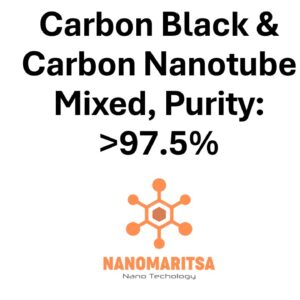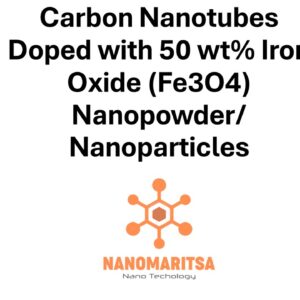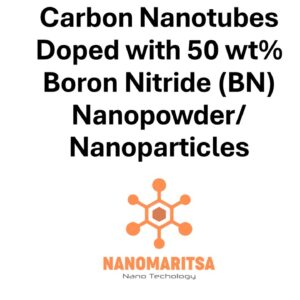Activated Carbon & Carbon Nanotube Mixed
Activated Carbon and Carbon Nanotubes (CNTs) mixed together refer to a composite material that combines the properties of both substances. Here’s an explanation of each component and their combined potential:
Activated Carbon
Activated carbon is a highly porous material, typically derived from carbon-rich materials like coal, wood, or coconut shells. It has a large surface area due to its porous structure, making it highly effective at adsorbing gases, liquids, and impurities. It’s commonly used in filtration, water purification, air purification, and as a catalyst support in various chemical processes.
Carbon Nanotubes (CNTs)
Carbon nanotubes are cylindrical structures made of carbon atoms arranged in a hexagonal lattice. They exhibit extraordinary mechanical, electrical, and thermal properties. CNTs are strong, lightweight, and conduct electricity and heat very efficiently, making them useful in electronics, nanocomposites, energy storage, and more.
Activated Carbon & CNT Mixed
When activated carbon is mixed with carbon nanotubes, the composite material aims to combine the benefits of both:
- Improved Adsorption Capacity: The activated carbon provides a large surface area for adsorption, while the CNTs can improve the mechanical strength and dispersibility of the composite, making it more efficient in adsorbing molecules or particles.
- Enhanced Conductivity: CNTs add electrical conductivity to the composite, which could be useful in applications such as sensors, energy storage devices (like supercapacitors), or filtration systems that need to interact with electrical fields.
- Increased Strength and Stability: The addition of CNTs can enhance the mechanical strength and thermal stability of the activated carbon, making the composite more durable and resistant to wear or degradation.
- Potential Applications: This mixed material can be used in various fields, such as:
- Water and air purification (enhanced adsorption of pollutants).
- Energy storage devices (like supercapacitors or batteries).
- Sensor systems (due to improved electrical properties).
- Composite materials with enhanced mechanical and thermal properties.
Overall, the combination of activated carbon and carbon nanotubes creates a versatile material with a broader range of applications by leveraging the unique characteristics of both substances.
Size: 90 nm, O.D.: 40-90 nm, Length: 10-30 µm
Technical Properties:
| Color | black | |||
| pH | 5,5-8,5 | |||
| Ash Content (%) | <0,1 | |||
| Bulk Density (g/cm3) | 0,35 | |||
| CNT Dimensions | O.D.: 40-90 nm/Length: 10-30 µm | |||
| Average Particle Size (nm) – AC (nm) | 90 | |||
| Specific Surface Area (m2/g) – mixture (m2/g) | 1900-2100 | |||
| Pore Size (nm)/Pore Volume (cm3/g) | 3-4/1,0-1,2 | |||
| Capacitance (F/g) | 150 | |||
| Elemental Analysis | C | Ni | Mg | Fe |
| >98 | 0,7 | <0,01 | <0,01 | |
Applications:
This powder mixture brings the super-capacitance properties of CNTs into life and offers a good alternative electrode material.
It should be kept away from sunlight, any kind of heating, moisture and impacts. Coagulation of the particles is a serious
problem, so, nanopowder should be sealed under vacuum and should be kept in cool and dry conditions.
This nanopowder mixture has very high surface area. It can be easily dispersed in various solvents. With its super capacitive
properties, it can be used in food storage, chemical industry, military, aerospace and textile industries, electronics and
pharmacy and many other applications that need high adsorption and chemical reactivity.
| Measurement (gr) | 25 grams, 100 grams |
|---|






